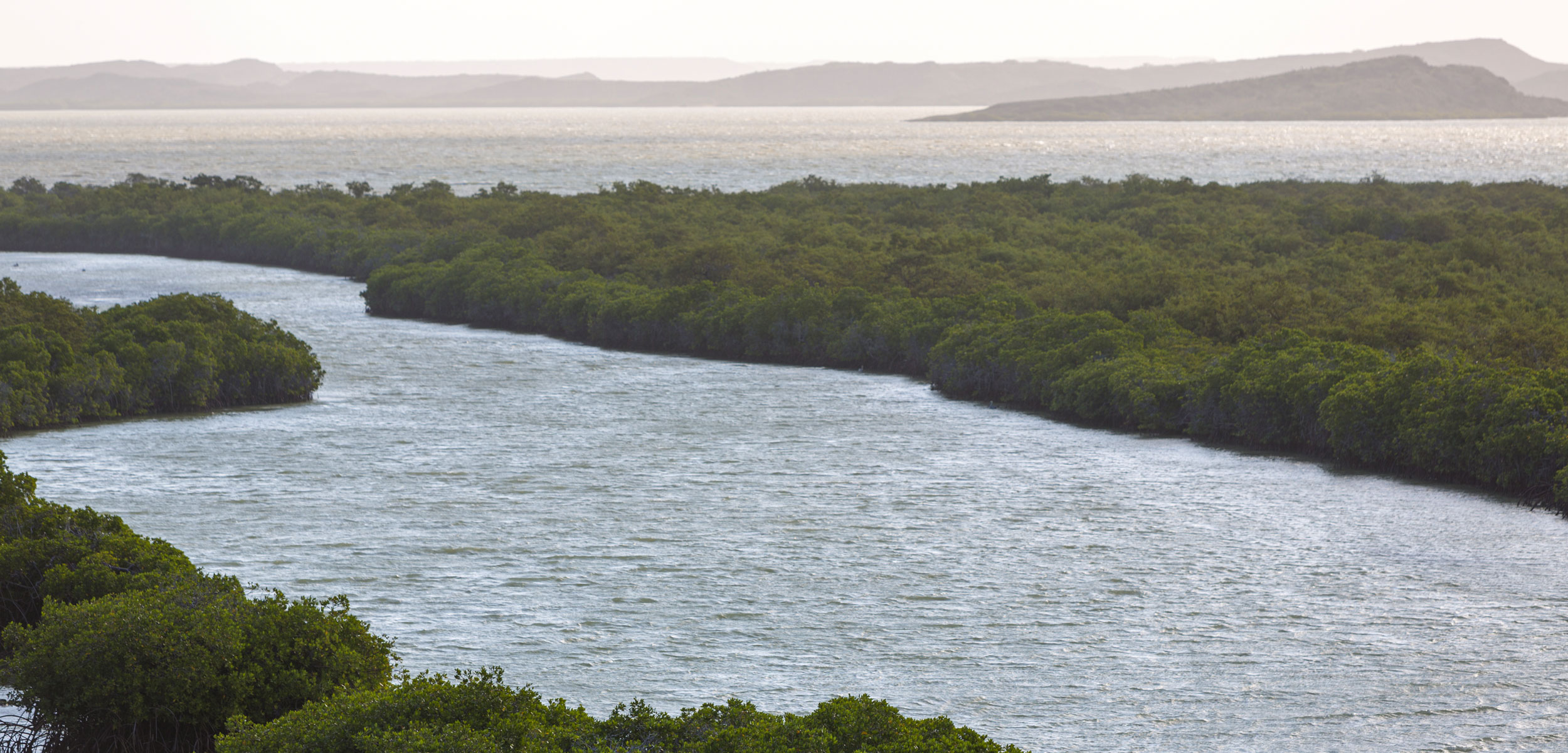Premium Colombian Carbon Credits
A massive mangrove conservation project just got the green light to sell carbon credits.
Article body copy
A mangrove conservation project on Colombia’s Caribbean coast is today being granted a large batch of carbon credits for its work, the sale of which will help ongoing efforts to prevent deforestation of this valuable ecosystem. The project is the first to make use of a new mechanism for earning so-called blue carbon credits, paving the way for others to make money from coastal conservation projects.
A carbon credit, by definition, represents one tonne of carbon dioxide soaked up or prevented from entering the atmosphere. Carbon credits can sell for anything from US $1 to more than $15 on the carbon credit market, and are typically bought by companies aiming to offset their emissions.
The project, funded by tech giant Apple, is run by the nonprofit Conservation International along with Colombia’s Marine and Coastal Research Institute, the Colombian nonprofit Omacha Foundation, and Colombian government environmental authorities. The partnership has been working to manage mangrove forests in the Gulf of Morrosquillo since 2015.
Now, the team is unlocking its ability to reap a big cash reward for the work by getting verified carbon credits for the carbon held in 7,646 hectares of mangrove forest—including, for the first time, the carbon stored in the mangroves’ underwater soils. This project is also the first to garner carbon credits for conserving—rather than restoring—these marine forest ecosystems.
The credits are being allocated by the Washington, DC–based nonprofit Verra, the world’s largest overseer of carbon credit projects. Money made from the credits’ sale on the carbon market will be channeled back into conservation efforts and the local community.
The Colombian group expects to get 60,000 credits this year for their work from 2015 to 2018, and just under one million credits in total over 30 years. By comparison, Verra says it has handed out about 970,000 credits to any and all marine-based blue carbon projects thus far.
Mangroves hold far more carbon per hectare than terrestrial forests, so restoring or conserving them packs a heavy punch per dollar spent in terms of climate change mitigation. It also reaps benefits for ecosystems and people: mangrove forests create habitat for fish, for example, and protect coastlines from storm surges.
Mangrove restoration projects have been eligible for carbon credits for years, but only for the carbon in the wood and foliage that stand above water. Accounting for the carbon lying in the soils that mangroves build up has been a harder task. That’s a shame, says Jennifer Howard, director of Conservation International’s blue carbon program, because for mangroves—unlike terrestrial forests—about 60 percent of their carbon is in the soils. “We knew we were leaving things on the table and not getting credit for them,” says Howard.
Soils are extremely important when counting up mangrove carbon, agrees Robert Twilley, a systems ecologist at Louisiana State University who studies mangrove carbon stocks—although how much carbon mangrove forests pack into their soils is highly variable from place to place, he adds.
The Colombian project’s leaders dug into their own mangrove soils to measure its carbon, and hired consultants to develop guidelines for Verra on how to account for conserved wetland carbon. That methodology update—which encompasses mangroves, seagrasses, and salt marshes—was published in September 2020; the Colombian team is the first to make use of it.
“This is a big deal,” says coastal geomorphologist Steve Crooks with the San Francisco–based consultancy Silvestrum Climate Associates, who helped to write the new Verra methodology. “Creating a network of such projects around the world will be hugely important in contributing to tackling climate change, conserving coastal ecosystems, and supporting sustainable livelihoods of coastal communities.”
Conservation International expects the new methodology to trigger a flood of carbon credit conservation projects around the world. “This is the first, but we won’t be the only ones for very long,” says Howard.
Experts, including Howard, caution that to hit targets for limiting global warming, companies need to concentrate on reducing their emissions before relying on carbon credit purchases to offset the remainder. For this project, Howard says, they are being picky about who they sell their credits to. “Companies have asked to purchase them, and we have said no,” she says. “We’re going to be doing an invite-only auction to create competition between companies we want to sell to. Not everyone does that.”
Carbon credits can also be controversial because it’s hard to guarantee that the ecosystem mopping up the carbon is permanent, or that the area would have been deforested if not for the conservation program. “Permanence is a real issue,” says Twilley. Tropical cyclones, for example, often hit areas that host mangroves. But, he adds, “When you whack it, it grows back. There’s a heck of a carbon accumulation rate.”

